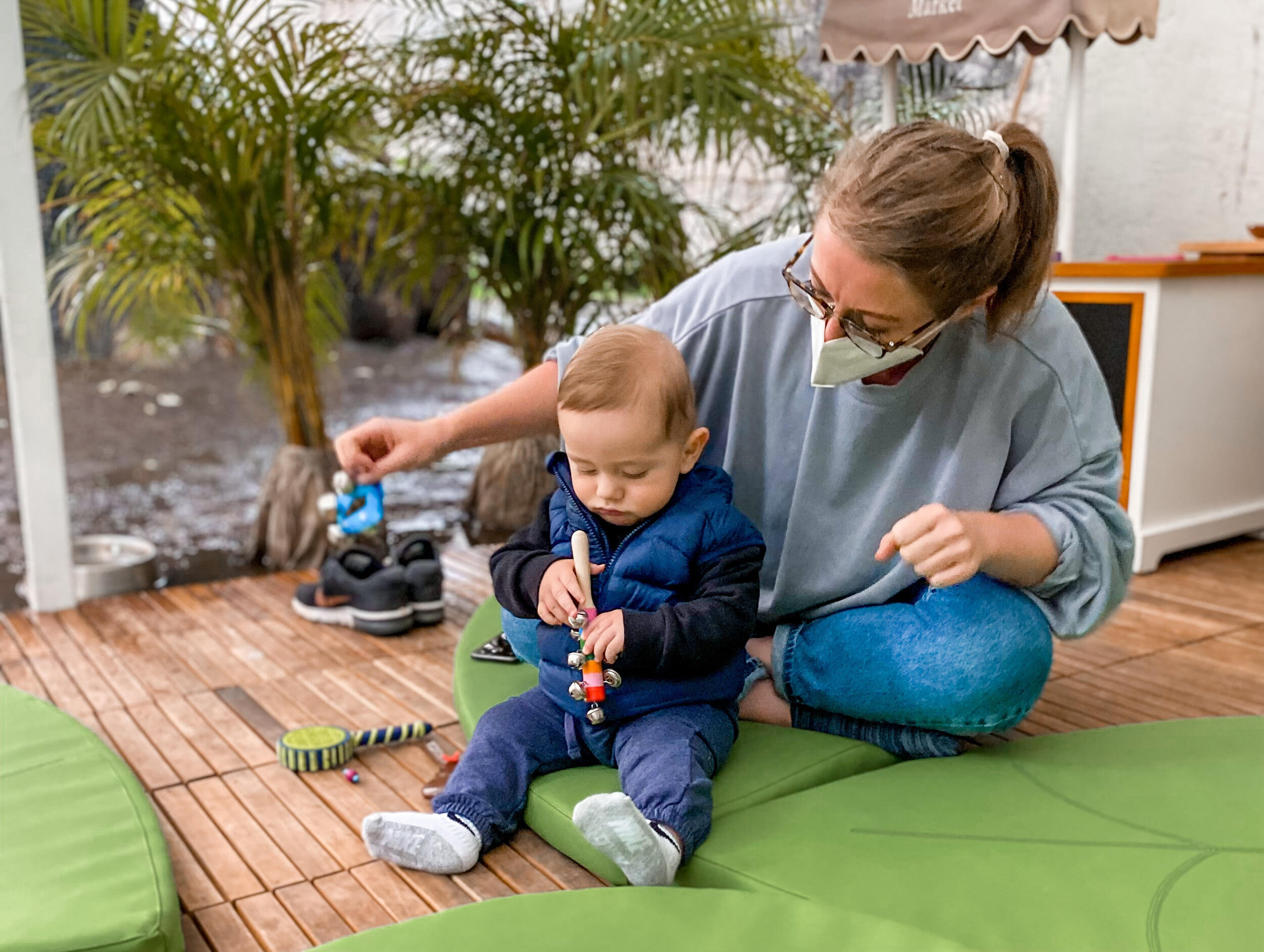5 Ways to Support Your Child’s Speech & Language Development During the Pandemic
Virginia D. Woronoff Bilingual M.S., CCC-SLP at Communicate with Kate Speech Therapy
Has the pandemic affected children’s speech and language development? Time will tell, but here’s what we know so far:
Masks:
Let’s talk about masks. They have been very effective in keeping us safe/healthy throughout the pandemic. (Fun fact: Per the CDC, we had an extremely light flu season last year due to our use of masks and other COVID precautions.)
Initially, concerns were expressed about the effects of masks on speech and language development as analyzing the mouths, faces, and expressions of the people around them is the primary avenue young children use to begin developing speech and language skills.
However, we know that visually impaired children develop speech and language skills at the same rate as their peers (ASHA, 2021). Similarly, to blind children, we can assume that young children will utilize other information provided to them (i.e. tone of voice, word choice, etc.) to derive meaning from what is said to them from behind a mask.
*Tip: Take advantage of mask free time at home with family to get some face-to-face time with your baby. Spending a few minutes to put all of your focus on them during daily routines like snack or bath time is a great opportunity to practice your language strategies without a mask.
Language Strategies:
· Narrating: Pick a couple minutes every day to narrate what you and your child are doing during a common routine (i.e. bath or snack time). This feels silly at first, but by describing what you see or what you and/or your child are doing in that moment, you are providing a great language model and exposing your child to lots of great repetitive vocabulary.
· Rule of Thumb: It’s common for adults to ask their children lots of questions as that is how we keep conversations going when we are communicating with other adults. However, this can overwhelm children- especially if they don’t yet possess the expressive/receptive vocabulary to answer the questions. Try making four comments to every question.
· Wait time and Affect: Many adults feel the pressure to fill the natural silences in conversation to keep it going. Sound familiar? We get it. Try holding those natural silences to give your child the opportunity to fill it. My favorite way to practice this way of communicating is during story time. During your child’s bedtime routine, try picking a repetitive story. As you read it to them with big affect to keep their attention, pause and look at your child after a few pages of repeating a certain phrase in the story to see if your child will finish it. If they don’t, no problem! You can finish it for them and then give them other opportunities to try again in a few pages.
5 Easy ways to support your child’s language at home:
1. Gain your child’s attention before speaking
2. Use your eyes, body language and tone of voice to enrich your message and engage your child
3. Reduce environmental noises and distractions when possible
4. Take advantage of mask free time in the home
5. Take trips to outdoors as you feel safe (i.e. the park, the zoo, a garden, or even grandma’s backyard) to increase your child’s opportunities to interact with new scenery and utilize new vocabulary
If you have concerns about your child’s speech and language development please reach out to your local speech and language pathologist for a full evaluation.


